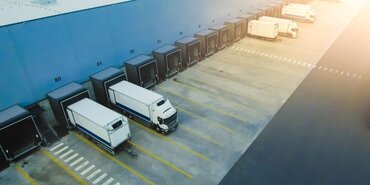BEWARE "TRUCKS" BEARING GIFTS

Port Strategy Article - Opinion Piece - May 2015
Laurence Jones - Director Global Risk - TT Club
Have you felt nervous driving next to a truck on a bend or roundabout? Your apprehension could well be justified. There are too many incidents where trucks, especially those carrying containers, overturn when cornering and discharge unwanted gifts on adjacent vehicles. Unfortunately fatalities often result. Never.never drive next to a truck on a roundabout!!!
While speed is often a cause, it is also becoming evident that the container being over-loaded, eccentrically loaded or the contents unsecured is often a contributing factor.
Attention has recently centred on the revised IMO regulations being enforced from July 2016 to forbid containers being loaded onto a ship unless the actual weight has been verified. The main principle of these IMO regulations is to highlight that the responsibility for obtaining and documenting the verified gross mass of a packed container still lies with the shipper. In addition, the regulation stipulates that a container should not be loaded onto a ship unless the master or his representative and the terminal representative have obtained, in advance of ship loading, the verified gross mass of the container.
The regulations prescribe two methods by which the shipper may obtain the verified gross mass of a packed container. Method No.1 - upon the conclusion of packing and sealing a container, the shipper may weigh, or have arranged that a third party weighs, the packed container. Method No.2 - the shipper (or, by arrangement of the shipper, a third party), may weigh all packages and cargo items, including the mass of pallets, dunnage and other packing and securing material to be packed in the container, and add the tare mass of the container to the sum of the single masses.
There is still uncertainty and many questions regarding how these new regulations will work. In order to understand the impact of these changes, the TT Club, in collaboration with other such as ICHCA (International Cargo Handling Coordination Association), is working on a programme to clarify the practical implications of the new regulation. It should, however be recognised that the way containers are packed, or incorrectly packed, poses a major threat to the safety throughout the supply chain. The aim of the new IMO regulation is primarily to protect the ship; it does not necessarily improve safety in other transport modes (road and rail) or at terminals.
ICHCA, supported by the TT Club, has been raising the awareness of the container packing issue under the slogan 'PACK IT IN!' Seminars have been held in the UK and South Africa to provide maritime professionals with practical education and advice on the contents of the IMO/ILO/UNECE Code of Practice for the Packing of Cargo Transport Units (CTU Code), which was approved during 2014. While the use of such units substantially increases the protections afforded to individual cargoes, improper packing works against this and may increase the risk of incidents.
There are many people through the entire supply chain who rely on the skill of the packer to prevent this risk, including not just those who are professionally involved in moving or handling the CTU, but also the general public on highways around the world. Analysis of the TT Club's claims indicates that as many as two-thirds of accidents involving damage to containerised cargo are likely to have been caused by improper packing and securing of cargo inside the unit.
Often those involved in packing CTUs struggle to get a heavy item in and then believe that it will never move in the unit during transit. Even if consideration of such potential movement is made, they may be inclined to believe that a 25 mm square batten nailed to the floor will stop it. Additionally, many also assume that placing the heavy load near the door will make it easier to get it out again, without thinking of the consequences of such weight distribution in different modes of transport. Cargoes covering the majority of the floor of a CTU are often not secured in the belief that, since there are few gaps, they will not move or not by much.
As a result of such practices, we see heavy cargo items breaking through the sides of containers, coils falling through the floors or simply the discovery at destination that the entire cargo has been smashed. Furthermore, there is inadequate awareness of the dynamic forces imposed on cargo during transit. In order to make the nature of these forces more understandable, consider this: a domestic washing machine goes through about 6,000 movements in a typical wash cycle; in comparison a trans-Atlantic voyage on a container ship may put cargo through some 160,000 similar movements.
Terminal operators are clearly very much involved in the 'where and how to weigh containers' debate, but they also face more immediate, on-going safety issues as a result of poorly packed containers. Chief among these are truck rollovers due to containers overloaded, eccentrically loaded or contents being unsecured and moving. It is possible to mitigate these risks by implementing and enforcing speed limits, and establishing one-way traffic flows within the terminal facility. Further, technologies already exist to measure the eccentricity of a container, which support safety.
However we need to fix the problem at the source and strive for full dissemination and adherence to the CTU Code (see http://www.unece.org/trans/wp24/guidelinespackingctus/intro.html). Achieving this globally will be a challenge for the entire industry; in the meantime, whether on terminal roads or public roads, always beware of trucks bearing gifts.
- Author
- Staff Author
- Date
- 15/06/2015





